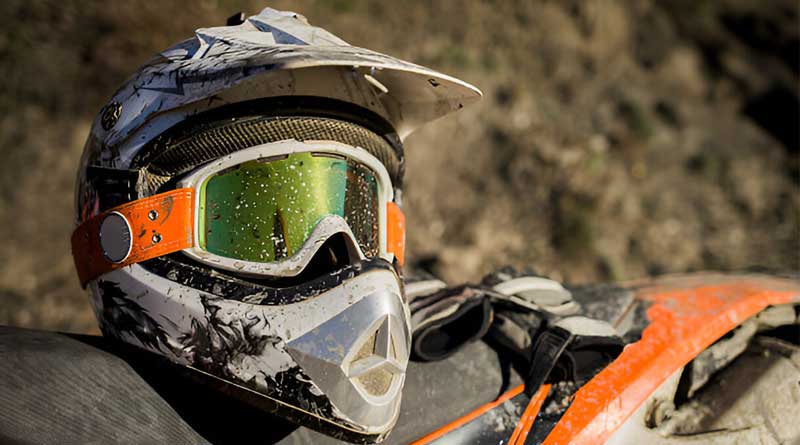Best Mountain Bikes Helmets for Big Heads of 2025
Finding the right mountain bike helmet can be hard if you have a big head. Many helmets feel too tight or uncomfortable. A good helmet should fit well and keep you safe. It should also feel light and let your head breathe. Riders with big heads often struggle to find the perfect fit. But don’t worry — we’ve done the work for you. In this article, we’ll show you the best mountain bike helmets for big heads. These helmets are safe, stylish, and made for comfort. Whether you’re hitting tough trails or riding for fun, we’ve got you covered. Let’s help you find the perfect helmet today.
1. Smith Engage MIPS
-
Shell Type: In-mold polycarbonate with impact-absorbing foam
-
Ventilation: 21 fixed air vents
-
Fit Adjustment: Rear dial with extended coverage at the back
-
Weight: Around 340 grams
Review: This helmet is a great option for mountain bikers who want both comfort and strong head protection. It includes a system that helps reduce the force from angled impacts, which adds an extra layer of safety. The durable shell and foam liner balance protection and weight well, while the 21 vents provide consistent airflow to help keep your head cool during long or challenging rides.
The fit system uses a dial to easily adjust the size, and the design wraps lower around the back of the head for better protection. The visor is movable, which works nicely with goggles or to block sunlight. This helmet is especially good for riders with bigger heads thanks to its roomy yet secure fit.
Pros:
-
Extra protection from angled impacts
-
Strong ventilation
-
Secure fit with extended coverage
-
Works well with goggles
Cons:
-
Slightly heavier than some other helmets
-
Not many color options
2. Giro Fixture MIPS
-
Shell Type: In-mold polycarbonate with inner foam liner
-
Ventilation: 18 air vents
-
Fit Adjustment: Rear dial for custom fit
-
Weight: Around 320 grams
Review: This helmet delivers reliable safety features and comfort at a good price. The angled impact protection system inside helps reduce certain types of injury during crashes. The shell is molded to be lightweight but still protective. With 18 vents, it keeps your head cool on the trail, even during long rides in warm weather.
It uses an adjustable rear dial to give a snug and comfortable fit. Even though it’s one-size-fits-most, the design works well for a range of head shapes, including larger heads. A built-in visor shields your eyes from sun and dirt, making it a good pick for trail riders and commuters alike.
Pros:
-
Affordable option with solid protection
-
Lightweight and well-ventilated
-
Comfortable and adjustable fit
-
Built-in visor for eye protection
Cons:
-
Visor is fixed and not adjustable
-
Limited size variety
3. Favoto Mountain Bike Helmet
-
Shell Type: Polycarbonate outer layer with foam inner lining
-
Ventilation: Multiple large air channels
-
Fit Adjustment: Adjustable rear dial
-
Weight: Around 250 grams
Review: This helmet is a solid choice for riders who want something light and affordable. It may not include premium features, but it does the job for casual or beginner mountain bikers. The shell and foam combo offers decent protection, and it’s noticeably lightweight, which makes it more comfortable over long distances.
The large air vents allow good airflow, helping to prevent overheating. Its dial system gives you control over how tight it fits, which is helpful for larger head sizes. While it may not feel as robust as more expensive models, it’s a good everyday helmet for light trail or road use.
Pros:
-
Very lightweight and easy to wear
-
Good airflow through the vents
-
Adjustable fit for various head sizes
-
Budget-friendly
Cons:
-
Lacks advanced impact protection systems
-
Basic build with fewer premium features
4. SAEROVIE Bike Helmet
-
Shell Type: Durable polycarbonate with shock-absorbing foam
-
Ventilation: Multiple vents for air circulation
-
Fit Adjustment: Adjustable rear dial
-
Weight: Around 300 grams
Review: This helmet strikes a balance between safety, comfort, and price. It has a hard outer shell and inner foam designed to handle normal bumps and falls on the trail. With its multiple air vents, it keeps your head cool during both slow climbs and fast descents.
The adjustable fit system makes it easy to dial in the right size, which is especially helpful if you have a larger head. Though it doesn’t include more advanced crash protection technologies, it meets general safety expectations and feels sturdy for the price. It’s a practical pick for casual rides or weekend mountain bike trips.
Pros:
-
Comfortable and breathable
-
Easy to adjust for a secure fit
-
Lightweight for longer rides
-
Great value for the price
Cons:
-
No special impact protection system
-
Simpler design with basic features
5. Veltuno Bike Helmet with LED
-
Shell Type: Polycarbonate outer layer with high-density foam inside
-
Ventilation: 18 vents for consistent airflow
-
Fit Adjustment: Adjustable rear dial system
-
Added Feature: Built-in LED light at the back
Review: This helmet is built with both safety and visibility in mind. Its standout feature is a rear LED light, which improves visibility in low-light or evening rides — great for urban or trail bikers who often ride at dusk. The outer shell and internal foam are built to absorb shocks from impact, offering decent protection. The 18 vents help with air circulation, which is especially important on warm rides or steep climbs.
The helmet’s fit can be fine-tuned with a simple dial, and it’s spacious enough for larger heads. The padding inside feels soft but firm, and the straps are easy to adjust. If you ride at different times of day and want added visibility, this helmet checks all the boxes without adding much weight.
Pros:
-
Rear LED increases nighttime visibility
-
Comfortable fit for larger heads
-
Lightweight and well-ventilated
-
Good value with extra safety feature
Cons:
-
LED light may need frequent battery changes
-
No advanced crash protection system
6. GROTTICO Bike Helmet with Light
-
Shell Type: Tough polycarbonate with energy-absorbing foam
-
Ventilation: 23 vents for airflow and heat control
-
Fit Adjustment: Rear dial plus adjustable side straps
-
Added Feature: Rear LED light with multiple flashing modes
Review: This helmet is a strong choice for riders who want a mix of protection, comfort, and visibility. It features a rear LED light with multiple flashing settings, which helps riders stand out on busy streets or darker trails. The outer shell is firm, and the foam liner cushions impacts well. With 23 air vents, this helmet stays cool even in hot weather or on longer rides.
The fit system is easy to use and gives the helmet a secure, customized feel. It works well for larger head sizes without pinching or slipping. The interior padding is washable, and the helmet includes a detachable visor for sunny or muddy conditions. Overall, it’s a smart option for riders who bike day and night and want more than just basic protection.
Pros:
-
Rear LED with flashing modes for visibility
-
Very breathable with lots of vents
-
Great fit for larger heads
-
Detachable visor adds flexibility
Cons:
-
Flashing light may not be bright enough in full daylight
-
Slightly bulkier due to light and visor
7. Exclusky Bike Helmet
-
Shell Type: Lightweight molded polycarbonate and foam
-
Ventilation: 18 vents for airflow
-
Fit Adjustment: Rear dial system with integrated straps
-
Weight: Roughly 290 grams
Review: This helmet is a great all-rounder for mountain bikers who want something simple but dependable. It’s light on the head, has a clean design, and fits comfortably without squeezing. With 18 vents, it provides decent airflow, which is noticeable on warmer days or longer trail rides. The foam liner and tough outer shell provide basic impact protection suitable for casual to moderate riding.
The fit dial is easy to use and the helmet stays firmly in place, even on bumpier terrain. It also has a visor that helps shield your eyes from sun or debris. While it doesn’t have high-end safety tech or lights, it’s a solid choice for someone who wants a reliable, budget-friendly helmet with a good fit for bigger heads.
Pros:
-
Lightweight and easy to wear
-
Clean, simple design
-
Fits larger heads comfortably
-
Includes a practical visor
Cons:
-
Lacks enhanced safety features
-
No visibility aids like lights
How to Choose Mountain Bike Helmets for Big Heads
Finding the right helmet is very important. If you have a big head, it can be harder. Many helmets feel too tight. Some may not cover your head well. Others might press on your forehead. This can make riding uncomfortable. But don’t worry. There are great helmets out there made for big heads. You just need to know what to look for.
Why the Right Fit Matters
A helmet that fits right will protect you better. It will also feel more comfortable on long rides. A tight helmet can give you a headache. It can also distract you while riding. On the other hand, a loose helmet can move around. This can be dangerous in a crash. A proper fit helps keep your head safe and your ride enjoyable.
Start With Helmet Sizes
Helmet sizes are not the same for every brand. One company’s large may feel like a medium in another. That’s why checking the size chart is important. Look at the head measurements in inches or centimeters. Then measure your own head with a soft tape. Wrap it around your forehead and above your ears. This will help you find the right size before you buy.
Some helmets come in XL or even XXL sizes. These are often better for big heads. You may also find helmets marked as “universal fit.” But be careful with these. They don’t always work well for larger heads. Always try to get a helmet with a size range that fits your measurement.
Look for Adjustable Fit Systems
Many helmets come with a dial at the back. This lets you tighten or loosen the fit. Some dials are large and easy to turn. Others are smaller and harder to grip with gloves. Try turning the dial before buying the helmet. Make sure it adjusts smoothly and evenly.
Some helmets also have adjustable side straps. These go under your ears and around your chin. They help keep the helmet in place. A good fit system can make a big difference. It can turn a tight helmet into a perfect one. Or it can help if you’re between two sizes.
Check the Shape of the Helmet
Heads come in different shapes, not just sizes. Some people have rounder heads. Others have more oval-shaped heads. Some helmets are made for round heads. Others fit better on long, narrow heads. Try different brands to see what works for your shape.
If a helmet presses on your forehead, it may be too round for you. If it feels loose on the sides, it may be too narrow. Finding the right shape helps avoid pressure points. This means more comfort during long rides.
Weight and Comfort Matter
A heavy helmet can cause neck pain. This is worse on long mountain trails. You want something light but still strong. Lightweight helmets use better materials. These may cost more, but they feel better on your head.
Padding is also important. Soft, thick pads make the helmet more comfortable. Look for helmets with removable and washable pads. This helps you keep the inside clean and fresh. Some helmets come with extra padding sets. This lets you adjust the inside to match your head better.
Make Sure It Has Good Ventilation
Mountain biking can be hard work. You will sweat, especially on uphill climbs. Good airflow keeps your head cool. Helmets with many vents let the air move through. This helps you feel cooler and more comfortable.
Big helmets sometimes have fewer vents. But you can still find roomy helmets with good airflow. Look for designs with wide channels inside. These move the air across your head better. A well-ventilated helmet can make a big difference on warm days.
Look for Safety Features
The main job of a helmet is to protect your head. So safety should come first. Many helmets now include extra features. One of the most common is a slip liner inside the helmet. This helps reduce the force from angled impacts. It’s a nice feature to have, especially on mountain trails.
You should also check for safety ratings. Look for labels that show the helmet has passed safety tests. These tests make sure the helmet can protect you in a crash. If a helmet does not have any safety label, skip it.
Try Before You Buy (If You Can)
If you’re buying from a store, try the helmet on first. Wear it for a few minutes. Shake your head gently. It should not move much. Check if there’s pressure on your forehead or temples. If you feel pain, try a different shape or size.
If you’re shopping online, buy from stores that allow returns. This lets you try the helmet at home. You can return it if the fit isn’t right. Some brands even list the head shape they design for. This can help you pick the best one for your needs.
Watch for Extra Features
Some helmets come with extras that can help. A visor is one of them. It blocks sunlight and helps keep branches out of your face. Some visors can move up or down. Others are fixed. If you ride in sunny or wooded areas, a visor is useful.
Some helmets also have lights built into the back. These are good if you ride in low light. They help others see you better. A helmet with a light is great for safety, especially if you ride early in the morning or at night.
Don’t Choose by Looks Alone
It’s easy to pick a helmet that looks cool. But the best-looking helmet might not fit well. Always choose fit and comfort over style. You can still find helmets that look good and feel good too. Just don’t make the design your first reason for buying.
Color does matter, though. Brighter helmets are easier to see. This helps drivers and other riders spot you on the trail. If safety is important to you, go for a bright color like orange, yellow, or red.
Conclusion
Choosing the right mountain bike helmet for a big head takes time. But it’s worth the effort. A good helmet protects your head and helps you enjoy your ride more. Start by measuring your head. Look for helmets with adjustable fit systems. Pay attention to shape, comfort, and airflow. Always check for safety features. And try on the helmet if you can.
With the right helmet, you’ll feel better and ride safer. You won’t be distracted by pressure points or loose straps. You’ll be ready to take on any trail with comfort and confidence. Happy riding!




